Indoor positioning is the recognition of location positioning in enclosed surroundings. The elements mostly needed to form an indoor positioning system are; base station and inertial navigation positioning, wireless communication, and other technologies. Indoor positioning enables the user to determine the location monitoring of people and objects in enclosed spaces. In this article, we will assist you in comprehending all about indoor location tracking.
What is Indoor Positioning Technology
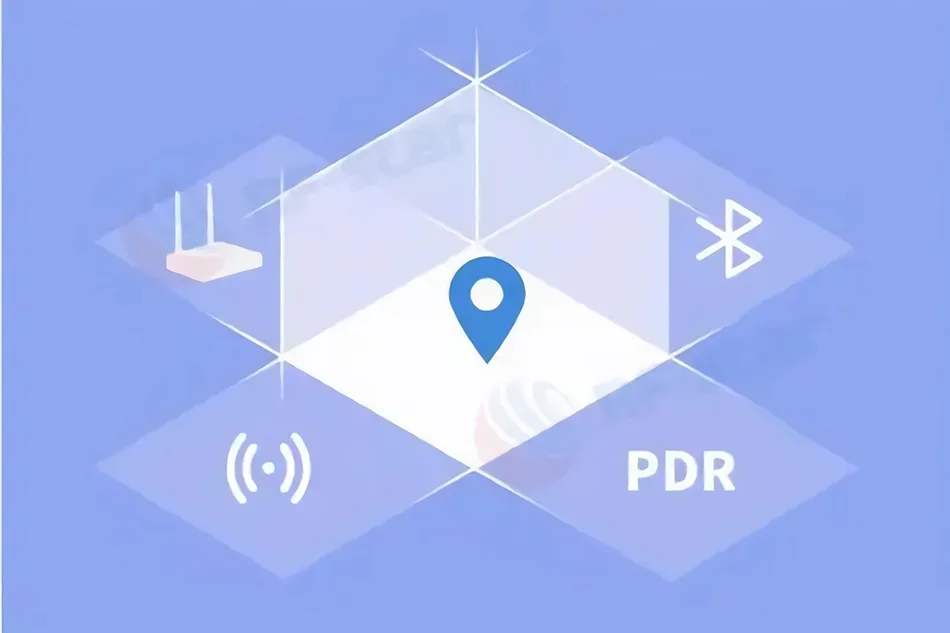
If it becomes hard to use satellite positioning in enclosed surroundings, indoor positioning technology can be used as the satellite’s auxiliary positioning. The indoor positioning technology can be used to resolve the challenge of a weak satellite signal when it reaches the ground and cannot infiltrate a building. Thus, finally locating the present position of an object.
Indoor positioning is the recognition of location positioning in enclosed surroundings. The elements mostly needed to form an indoor positioning system are; base station and inertial navigation positioning, wireless communication, and other technologies. Indoor positioning enables the user to determine the location monitoring of people and objects in enclosed spaces. Other than the cellular positioning technology of communication networks, there are other common indoor wireless positioning technologies. They are;
In outdoor settings, satellite navigation technology has been extensively used in many people’s lives. With the unceasing growth of social modernization and the quick increment of large buildings, individuals are now spending over 80% of their time in indoor environments, thus increasing the demand for indoor location services. Using correct indoor position data in platforms such as the Internet of Things, special crowd positioning, personal location services, and management of large-scale venues is essential. Indoor location data is significant, especially in emergency setups, like fire and rescue, earthquake relief, emergency evacuation, etc.
How does indoor positioning work?
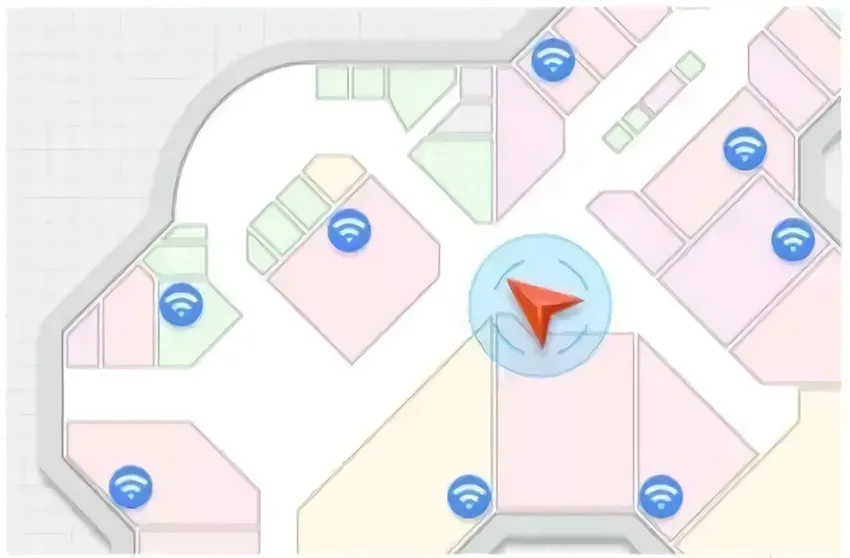
Infrared positioning technology
There are two types of indoor infrared positioning. In the first one, infrared IR identification is used by the located target as a point of movement to transfer modulated infrared rays from the optical sensor fixed in a room for positioning. The second one uses many pairs of receivers and transmitters to locate the moving target directly. This enables it to weave the infrared mesh to protect the measured space.
Ultrasonic Indoor Positioning Technology
This indoor positioning technology is built based on the ultrasonic ranging system. It comprises various main range finders and transponders. The main range finder is always placed in the measured object. At the same time, the transponder is fixed in a strategic position to launch video signals that, after receiving, determine an object’s location using the triangulation algorithm and reflex ranging method.
Radio Frequency Identification (RFID) Indoor Positioning Technology
Radio frequencies are used in the RFID indoor positioning technology. Moreover, an antenna is fixed in it to fine-tune the radio signal into an electromagnetic field. It is linked to the magnetic field’s tag after the inductive existing generation to transfer information to attain the aim of identification and triangulation by various pairs of two-way communication information exchange. The RFID technology is primarily used in-store security systems and inductive admission cards.
Bluetooth Indoor Positioning Technology
In Bluetooth indoor technology, various access points of a Bluetooth LAN are fixed in a room to sustain the network into a connection mode of the primary network based on many users. It ensures that the access point of a Bluetooth LAN is always the piconet’s primary device. It measures the strength of a signal by triangulating the freshly added blind nodes.
Wi-Fi Indoor Positioning Technology
Wi-Fi positioning technology exists in two types. The first one uses a mobile device’s wireless signal strength and three wireless network access points via the difference algorithm to accurately triangulate people and objects. The second one records the strength of a signal at many location-specific points. It determines the location by comparing the signal strength of the freshly added device with a database of vast data amounts (” fingerprint “positioning).
ZigBee indoor positioning technology
This indoor positioning technology creates a network between various located-blind nodes and a reference node with a recognized gateway and location. Here, positioning is achieved by the communication of every tiny blind node.
Ultra-broadband Indoor Positioning Technology
It is a new technology in the market and a little bit different from the traditional technologies of communication positioning. It communicates with freshly added blind nodes via bridge nodes and a pre-arranged anchor. Moreover, its location is determined using triangulation or “fingerprint” positioning.
What is Indoor Positioning System Used for?
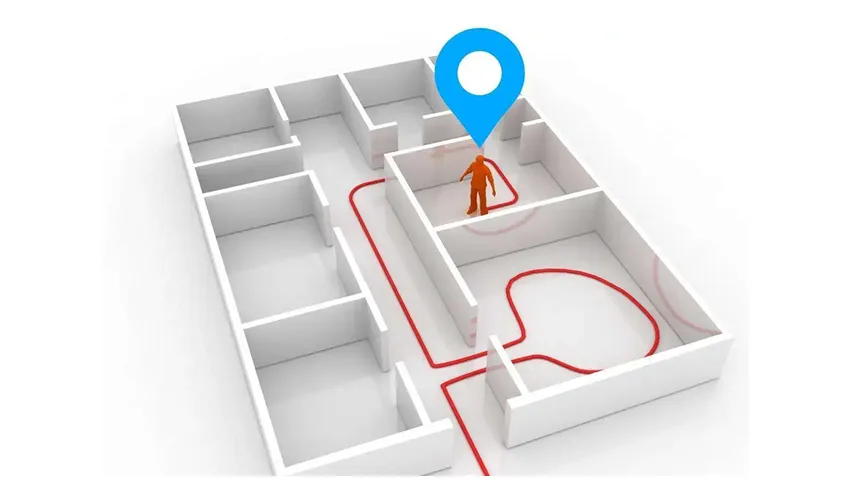
Infrared positioning
The infrared indoor positioning technology is used mainly for positioning self-moving robots and accurately positioning simple objects’ laboratory trajectories.
Ultrasonic indoor positioning
The ultrasonic positioning technology is primarily used in offshore prospecting and digital pens. Moreover, this indoor positioning technology is also used mainly for object positioning in unmanned workshops.
Radiofrequency identification (RFID) indoor positioning
The RFID indoor positioning technology is vastly applied in factories, warehouses, and shopping malls to position items.
Bluetooth indoor positioning
The Bluetooth indoor positioning technology is largely used to trace individuals in small spaces like single-storey shops. It is also used for LBS promotion by some manufacturers.
Wi-Fi indoor positioning
The Wi-Fi indoor positioning technology is best for use for locating and navigating people and objects. Furthermore, this technology can also be in areas requiring positioning and navigation, like factories, medical institutions, shopping malls, etc.
ZigBee indoor positioning
The ZigBee indoor positioning technology is used mainly as an on-job management system by various big industries and workshops.
Ultra-broadband indoor positioning
The UWB indoor positioning technology is used for precise indoor locating and navigation in different fields, such as valuable commodities, mining personnel, car parking navigation, etc.
How Accurate is the Indoor Positioning System?

Infrared positioning system accuracy
An infrared thermometer mostly has an accuracy of ±2℃.
To get the correct temperature reading, the length between the test target and the thermometer should always be within an appropriate range. The area of the spot that the thermometer measures is known as the “spot size”.
The blip size is large when it is further away from the target. On a laser sight-type thermometer, the laser point has an offset distance of 12mm (0.47 in) as it is always above the centre of the target.
Ultrasonic indoor positioning system accuracy
The accuracy of indoor ultrasonic positioning is relatively low: ± (1cm+0.5%× distance).
The code of ultrasonic ranging is to use the propagation speed of an ultrasonic in known air. After launching the reflected time of an obstacle, the sound wave is measured with the reception and transmission of the time difference. This assists in computing the real distance between the point of launching and the obstacle. The ultrasonic ranging principle is similar to the radar principle.
Radiofrequency identification (RFID) indoor positioning system accuracy
RFID tags are of two types (passive tags and active tags). Active tags are considered a comparatively broad sense of RFID since the tag is active. Its signal processing is complex and has a higher positioning accuracy. Under perfect conditions, it can attain a range of 100 meters and a positioning error of around 5 meters. It uses triangulation to measure accuracy.
Bluetooth indoor positioning system accuracy
The Bluetooth positioning technology’s accuracy is around 2-5 meters. The precise accuracy is not only allied to the density of deployment but also to the inner environmental structure, positioning algorithm, hardware device itself, etc. When the accuracy is high, the deployment density is high too, the algorithm more complex, and the overall cost of implementation is also high. It is mainly used for active positioning and wayfinding of personnel. Its range of accuracy can meet the requirements of navigation in indoor wayfinding within 5 meters.
Wi-Fi indoor positioning system accuracy
AP signal cover-up in indoor surroundings is usually within 100 meters. In the wireless signal transmission process, there is a definite connection between the received signal’s power intensity and the transmission interval.
ZigBee indoor positioning system accuracy
The Zigbee signal strength derives from the fingerprint localization algorithm, such as the localization phase (EstimationPhase) and the TrainingPhase (TrainingPhase). The Trainingphase usually assembles the signal strength of a static node and establishes the database of a fingerprint in the located area after completing the hardware deployment.
In the Indoor localization phase, the range of the hardware deployment area establishes the mobile node. Simultaneously, this phase regularly demands and obtains signals from the adjacent static nodes during the movement. The present location of the mobile node is estimated by comparing different location points in the fingerprint database created in the training phase. Its general positioning accuracy is around 75 meters.
Ultra-wideband indoor positioning system accuracy
The Uwb positioning technology is more suitable for indoor uses. It has a high positioning accuracy of about 1 to 15 centimeters. Moreover, the technology is beneficial as it consumes less power, has a high resolution, and has a vibrant anti-interference capability.
Disadvantages of Indoor Positioning
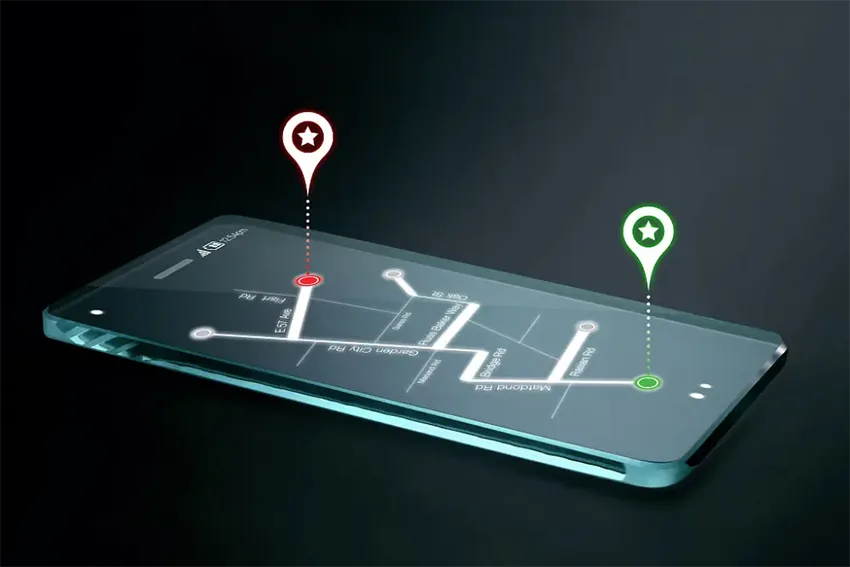
Infrared positioning
In infrared technology, indoor positioning accuracy is relatively high. Nevertheless, infrared positioning has poor penetration as it can only spread at line-of-sight. It cannot usually work whenever its signal is blocked and is easily affected by environmental factors such as lighting and smoke.
GPS positioning
GPS technology is mainly used for outdoor positioning. The benefits of positioning using the GPS are that it has extensive and adequate satellite coverage and it has a free positioning and navigation signal. However, it still has some disadvantages as it is unsuitable for indoor positioning since it has a weak positioning signal which cannot reach the ground or penetrate buildings. Additionally, the price of the locator terminal is high. The GPS technology can attain a positioning accuracy range of 5-20 meters.
Wi-Fi positioning
The IEEE802.11 location solution is currently the most popular location in Wi-Fi. Wi-Fi positioning is primarily applied to a small indoor positioning area for its low cost. However, a Wi-Fi transceiver only covers a geographic region within a radius of 90 meters. This technology is unreliable as its positioning accuracy is highly affected by the interference of other signals. Moreover, its locator consumes high energy.
Bluetooth positioning
Bluetooth technology is similar to Wi-Fi in many ways. It is primarily used for localization in small-scale areas like warehouses and single-storey stores. Also, its disadvantage is that its positioning error is stable and has excellent noise signal interference.
UWB positioning
The UWB positioning technology is brilliant for use as its low power consumption rate. Moreover, it has an intense penetration, high security, good anti-multipath effect, and improved positioning accuracy. Its positioning accuracy is up to 10cm. This technology is mainly used for location tracking of indoor moving objects. Thus, the UWB positioning technology with high precision has become the most frequently used indoor positioning due to its high accuracy. It is suitable for use in factories, chemical plants, tunnels, public security judiciary, and other places.
Indoor positioning Applications?
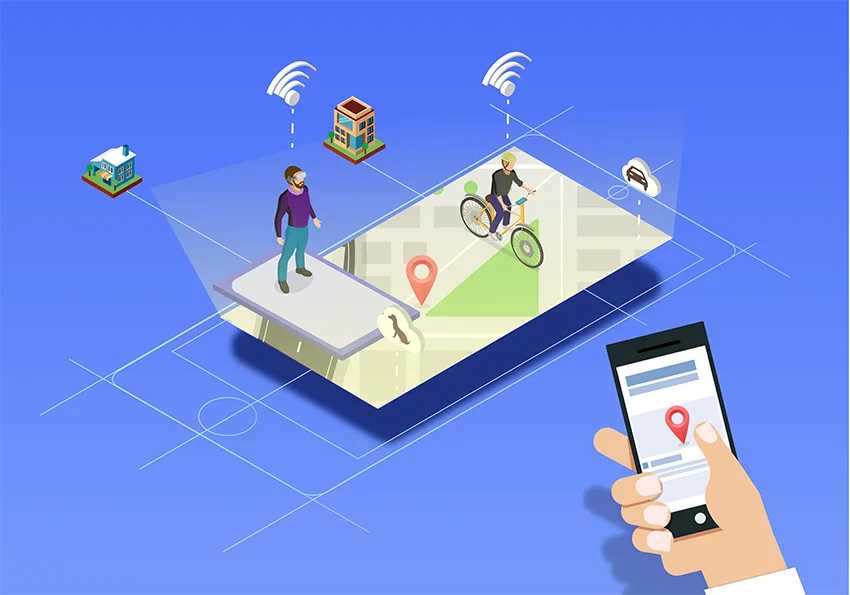
1. Indoor location service
Indoor positioning is used mainly in hotels, supermarkets, museums, airports, pavilions and other large indoor scenes. It is also used in areas with a complex layout, like supermarkets. It lets users quickly locate goods they want to purchase and use the route navigation on the mobile terminal to plan the path.
Moreover, indoor positioning enables users in large shopping malls to quickly inquire and navigate to the mall and entertainment places as they need to. Indoor positioning also offers efficient locating and navigation services in museums and exhibition centers.
2. Reverse car search in Smart parking lots
In complex environs such as underground parking lots, indoor positioning and triangulation assist customers in quickly locating free parking spaces.
3. Smart building positioning
In smart buildings, the primary use case aspect for indoor positioning is visitor management and tracking the visitor’s real-time trajectory using visitor cards.
4. Positioning management of the elderly and service personnel in nursing homes
The application of indoor positioning in nursing homes is a very demanding market, closely related to the safety of the elderly. The indoor positioning technology can realize real-time positioning and monitoring of the elderly, playback and query of the elderly’s movement trajectory, and the elderly can call for emergency help when facing dangerous situations.
5. Positioning and management of prison guards
Indoor positioning is also widely used in the field of judicial prisons. With the help of indoor positioning technology, the traditional prison personnel management mode will become simple, quick and effective. By wearing the anti-disassembly positioning bracelets for the guards and prisoners, the prisoners can be located in real-time, and the track of historical activities can be played back and queried.
6. Personnel positioning management in high-risk industries
Positioning personnel management is essential in chemical plants, tunnel construction, subway construction, and other construction sites at a higher risk. In these setups, it is crucial to locate workers for safety and call for assistance whenever any employee is in danger. Nevertheless, indoor positioning finds and manages these places to prevent workers from entering hazardous zones.
Additionally, indoor positioning has numerous use case scenarios such as storage logistics, fire rescue, industrial manufacturing, etc.
Well-known Indoor Location Service Companies in the world
Apple Inc.
Apple is anticipated to release its indoor LBS solution soon. Nevertheless, the company used over $20 million in 2013 to buy Wifislam Inc. and has capitalized heavily on designing 3D-based indoor LBS applications. It is projected that Apple will soon present its applications in indoor LBS using the next iPhone version.
Google Inc.
Google Inc. is one of the prominent indoor LBS map providers. Furthermore, the company provides an application for Friend Finder in indoor locations. Currently, Google is available in 11 countries with around 10,000 floors. The company is intensifying its operations in developed nations like Britain, the United States, Australia, Japan, and Germany. Google concentrates on hospitals, airports, hotels, shopping centres, libraries, retail chains, sports venues, museums, religious centres, casinos, universities, convention centres, and transit points. The company is partnering with various chains of retail to enlarge its user base at a faster rate.
HERE (Nokia Corp.)
This is one of the leading providers of indoor digital maps. Although the company works independently, it is a subsidiary of Nokia. The company creates accurate and high-quality indoor maps that represent comprehensive road networks. In this case, the destination map is the indoor mapping product of the company. In 2011, the company started offering field and floor maps services, mainly focusing on markets in China, the United States, and India.
Micello Inc.
Micello Inc. is one of the leading providers of indoor LBS maps. The company has observed significant growth over the past two years. The company has over 15,000 sites globally. Memello concentrates on Japan, the United States, and Australia markets. Around 90 percent of its locations are in the United States. Micelles have the highest number of retail sites and shopping centres compared to other indoor LBS providers. Nevertheless, the company’s presence is limited outside the United States.
Shopkick Inc.
Shopkick Inc. is one of the leading designers of indoor LBS platforms and applications. The indoor LBS application of the company is primarily used in the United States. Nonetheless, it has a limited presence outside the United States. As stated by Nielsen, Shopkick is liked by over 6 million people, thus making it the most frequently used shopping application and the fourth in general (with Amazon and eBay). The company is determined to improve the shopping experience of a buyer by partnering with retailers such as Best Buy, Macy’s, Sports Authority, Old Navy, L’Oreal, JCPenney, Crates & Buckets, Kraft, and other top brands.
AeroScout
Aeroscout is a top provider in the market of indoor RTLS. Its primary market is the healthcare sector. The Wi-Fi RTLS solution of AeroScout in this market segment is deployed in the American Hospital Association. With the increase of RTLS demand in the healthcare sector, the company is currently intensifying its business and growth of experience in this vertical.
Ekahau
In the world RTLS market, the Ekahau company is one of the top providers of indoor RTLS solutions. It provides a variety of Wi-Fi RFID tags that can be used for position tracking of individuals and assets. Its Wi-Fi tag offers two-way communication and is used for tracking purposes in various applications. Moreover, it also offers indoor RTLS solutions for the healthcare sector and solutions for workflow management and employee security for small micro-enterprises. The company has partnered with various top Wi-Fi system providers in wireless infrastructure.”
HP Enterprise Services LLC
HP Enterprise Services LLC is a leading evolving player in the indoor navigation market. In December 2012, the company got a whopping $543 million for a contract of five-year from the Department of Veterans Affairs in the United States to set up RTLS solutions in over 150 networked hospitals. The main aim of installing these solutions is to improve senior healthcare service operations and computerize different processes in the healthcare industry.
Zebra Technologies
Zebra Technologies is a top indoor RTLS solutions provider in the United States. In 2007, the company improved its portfolio in RTLS solutions by acquiring Wherenet Corp, a leading provider of RTLS solutions in the market. Zebra Technologies offers RTLS and RFID solutions for government organizations, transportation and logistics, manufacturing, healthcare, sports and entertainment, consumer goods, retail and BFSI industries.
aisle411 Inc.
AISLE411 is the retailer’s top indoor location solutions provider. The company provides mobile retail direction finding and a platform for social shopping that assists buyers in finding what they require and receiving reward points. The company was established in 2008. Its main headquarters are based in St. Louis, Missouri, USA.
















